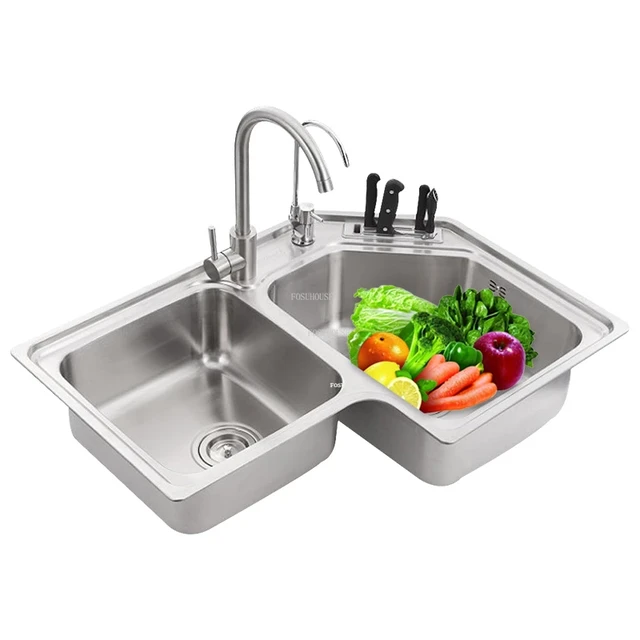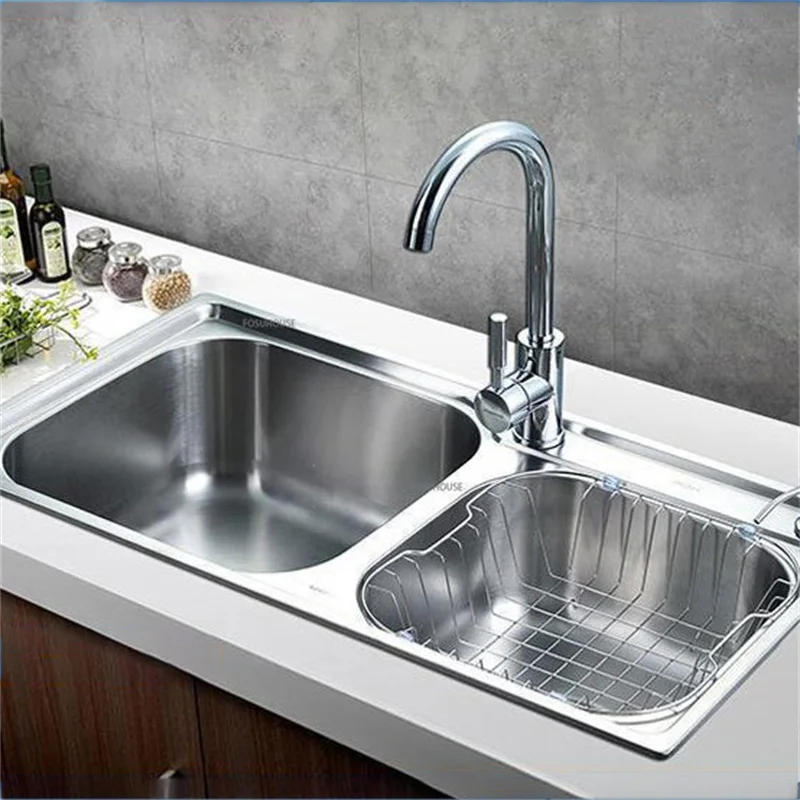 Introduction:
Introduction:
A clogged double kitchen sink can be a frustrating inconvenience, causing water backup and making it difficult to use your sink properly. Fortunately, unclogging a double kitchen sink can be done with a few simple tools and techniques. In this comprehensive guide, we will provide a step-by-step approach to unclogging a double kitchen sink. From identifying the source of the clog to utilizing various remedies, this guide will help you restore proper drainage and functionality to your sink.
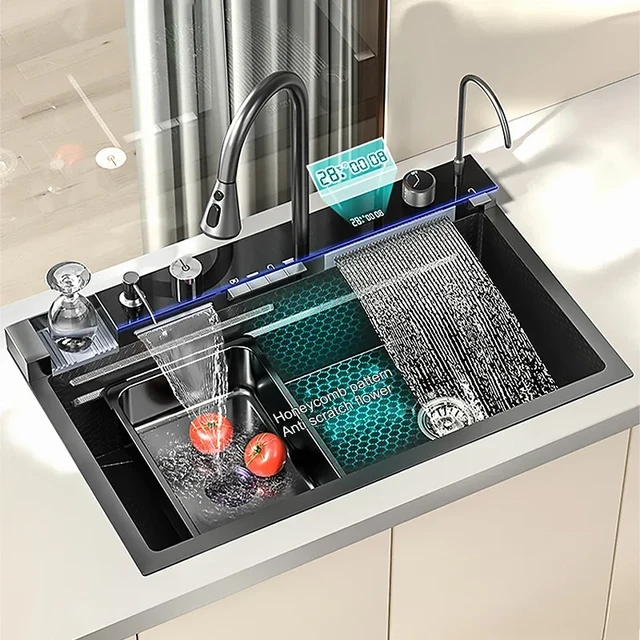 Introduction to Unclogging a Double Kitchen Sink
Introduction to Unclogging a Double Kitchen Sink
Unclogging a double kitchen sink is necessary to restore proper drainage and avoid water backup.
A. Common Causes: Clogs in kitchen sinks are often caused by a buildup of food debris, grease, or other foreign objects in the drainpipes.
B. Importance of Prompt Action: Addressing a clog early on can prevent further damage to the plumbing system and ensure the efficient use of your sink.
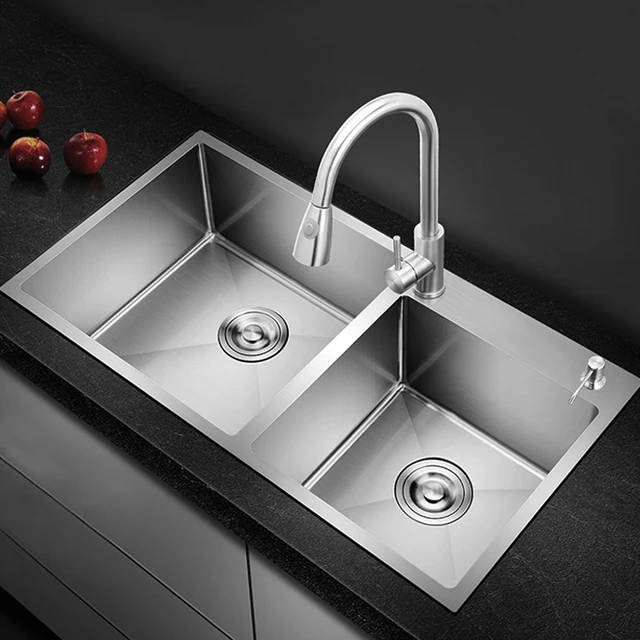 Some common types of kitchen sinks:
Some common types of kitchen sinks:
There are several types of kitchen sinks available, each with its own features and benefits. Here are some common types of kitchen sinks:
Top Mount Sink:
Also known as a drop-in sink, this type of sink is installed from above, with its rim resting on the countertop. It is a popular and economical option, easy to install, and available in various materials and styles.
Undermount Sink:
An undermount sink is installed underneath the countertop, creating a seamless look. This type of sink allows for easy countertop cleanup as there is no rim to catch debris. It is commonly made of materials like stainless steel or composite materials.
Farmhouse Sink:
Farmhouse sinks, also called apron sinks, have a large, exposed front panel that extends beyond the edge of the countertop. They provide a rustic and charming look to the kitchen and are often deeper than other sink types. Farmhouse sinks are available in different materials such as porcelain, fireclay, or stainless steel.
Stainless Steel Sink:
Stainless steel sinks are popular due to their durability, versatility, and ease of maintenance. They are resistant to stains, scratches, and heat. Stainless steel sinks are available in various styles, finishes, and configurations.
Composite Sink:
Composite sinks are made from a blend of materials like granite or quartz combined with resin. They offer a durable, scratch-resistant, and heat-resistant surface. Composite sinks come in various colors and styles and are easy to clean and maintain.
Cast Iron Sink:
Cast iron sinks have a durable enamel coating over a cast iron base. They are known for their longevity, heat resistance, and ability to withstand heavy use. Cast iron sinks come in different colors and are available in both traditional and contemporary styles.
Double Bowl Sink:
Double bowl sinks feature two separate bowls, providing flexibility for multitasking in the kitchen. They are ideal for washing dishes in one bowl while using the other for food preparation or disposal.
Single Bowl Sink:
Single bowl sinks have one large, deep basin. They offer ample space for washing larger items and are suitable for kitchens with limited counter space.
These are just a few examples of the types of kitchen sinks available. When choosing a sink, consider factors such as material, size, style, and functionality to find the best fit for your kitchen needs and preferences.
 Identifying the Problem
Identifying the Problem
Determining the location and severity of the clog is crucial for selecting the appropriate unclogging method.
A. Verify the Clog: Confirm that both sides of the double kitchen sink are affected by checking if water won’t drain or drains slowly on either side.
B. Assessing the Severity: Determine if the clog is near the sink or further down in the drainpipes by observing the water flow and backup.
Unclogging Methods
Several methods can be used to unclog a double kitchen sink, depending on the severity and location of the clog.
A. Plunger: Use a plunger to create pressure and dislodge the clog. Ensure there is enough water in the sink to cover the plunger cup, and plunge vigorously several times.
B. Boiling Water: Carefully pour boiling water down the drain to dissolve grease and food particles. Repeat as needed.
C. Baking Soda and Vinegar: Create a fizzy reaction by pouring a cup of baking soda followed by a cup of vinegar down each drain. Allow it to sit for a few minutes before rinsing with hot water.
D. Plumbing Snake: Insert a plumbing snake or auger into the drainpipe to break up or retrieve the clog. Follow the manufacturer’s instructions for proper use.
Prevention and Maintenance
Taking preventive measures can help reduce the occurrence of clogs in the future.
A. Avoid Pouring Grease: Dispose of grease and oil in a separate container instead of pouring them down the sink.
B. Use a Drain Catcher: Install a drain catcher or strainer to prevent food debris and other solids from entering the drainpipe.
C. Regular Cleaning: Routinely clean your sink and drainpipes using hot water, baking soda, and vinegar to remove any buildup before it becomes a clog.
Seeking Professional Help
If the clog persists or seems too severe to handle on your own, it may be necessary to seek professional plumbing assistance.
A. Professional Plumbers: Trained plumbers have the expertise and specialized tools to tackle stubborn or complex clogs that cannot be resolved using basic methods.
B. Regular Maintenance: Consider scheduling regular inspections and maintenance checks with a professional plumber to identify and address potential issues before they become major problems.
Some important considerations:
When it comes to pairing a kitchen sink with a faucet, there are a few factors to consider to ensure compatibility and functionality. Here are some important considerations:
Mounting Type:
Determine the mounting type of your sink, whether it is a top mount (drop-in), undermount, or farmhouse sink.
Number of Faucet Holes:
Check the number of pre-drilled faucet holes in your sink. Most sinks have either one, two, three, or four pre-drilled holes for the faucet and other accessories. Make sure the faucet you choose matches the number of available holes in your sink. Alternatively, you can use a base plate or cover plate to bridge any extra holes if needed.
Configuration:
Consider the configuration of your sink and how you plan to use it. If you have a double bowl sink, you may opt for a faucet with a separate sprayer or second spout for added convenience. A single bowl sink may require a faucet with a pull-out or pull-down sprayer.
Height and Reach:
Determine the height and reach of the faucet. Ensure that it provides ample clearance and reach to comfortably fit and cover your sink. Consider the depth and size of your sink bowls to avoid splashing and to ensure efficient use of the space.
Style and Finish:
Consider the overall style and aesthetic of your kitchen when selecting a faucet. Choose a finish that complements the sink, backsplash, and other kitchen elements. Popular finishes include chrome, stainless steel, brushed nickel, and oil-rubbed bronze.
Functionality and Features:
Consider the specific features and functionalities you desire in a faucet. This can include options like single-handle or double-handle controls, touchless operation, water-saving capabilities, and adjustable spray modes.
Quality and Durability:
Invest in a high-quality faucet from a reputable brand that offers long-lasting performance and durability. Look for faucets with solid brass or stainless steel construction for added longevity.
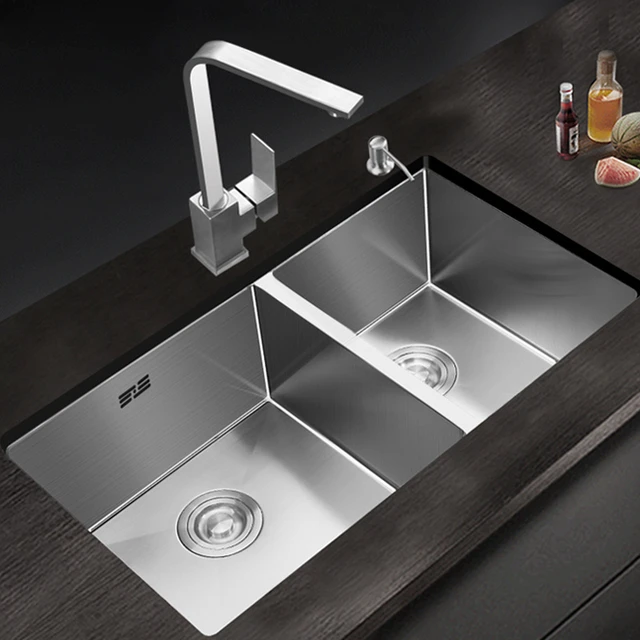 Conclusion
Conclusion
Unclogging a double kitchen sink is a manageable task that can be accomplished with a few simple tools and techniques. By following the step-by-step guide outlined in this article, you can successfully restore proper drainage and functionality to your sink. Remember to identify the source of the clog, select the appropriate unclogging method, and take preventive measures to reduce the occurrence of future clogs. With a little effort and regular maintenance, you can enjoy a clear and functional double kitchen sink that meets your daily needs.
